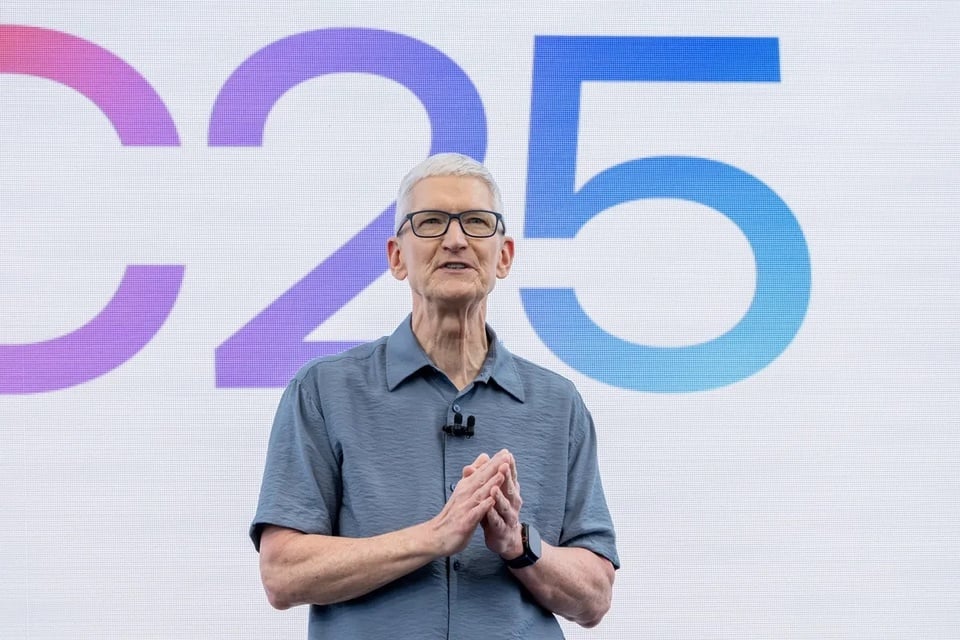 |
Apple's CEO is now 65 years old and choosing a successor is also a problem for Apple. Photo: Reuters . |
The iPhone, Apple's flagship product, is seeing declining sales, especially in China. Meanwhile, the company has yet to catch up with its rivals in new areas like artificial intelligence (AI) and has yet to find the next "hit" after the iPhone after its car and virtual reality glasses projects failed to meet expectations.
Add to that the threat of tariffs levied by the Trump administration. Apple has shifted some production to India to avoid tariffs on goods made in China, but the president has continued to pressure Apple to manufacture iPhones in the United States, something Apple executives say is nearly impossible due to high costs.
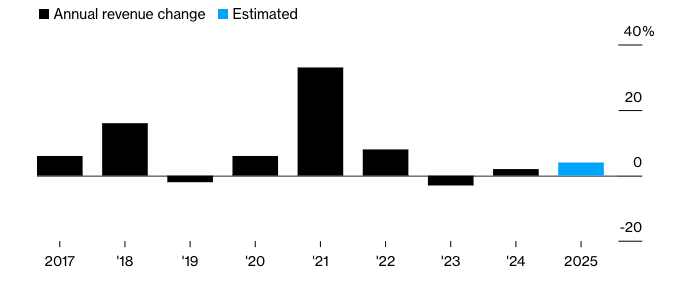 |
Apple's revenue growth since 2017 (in %) has stagnated, even declined in some years, in recent years. Photo: Bloomberg . |
A series of difficulties have affected Apple's stock, causing it to fall behind other tech giants this year. Apple is no longer the world's largest company by market capitalization, a position now held by Nvidia and Microsoft.
Artificial Intelligence
Since OpenAI's ChatGPT launched in 2022, tech companies have been racing to integrate generative AI, technology that can generate text, images, and videos from simple commands.
Apple has been relatively quiet in this AI wave, causing observers to worry that the company is falling behind. In 2024, Apple announced “Apple Intelligence” integrated into the device. This technology supports text summarization, original image creation, and intelligent data retrieval.
However, the software is still plagued with bugs while Android rivals continue to improve and integrate more AI features. Apple has partnered with OpenAI, but prominent features like the new version of its Siri voice assistant are not yet ready.
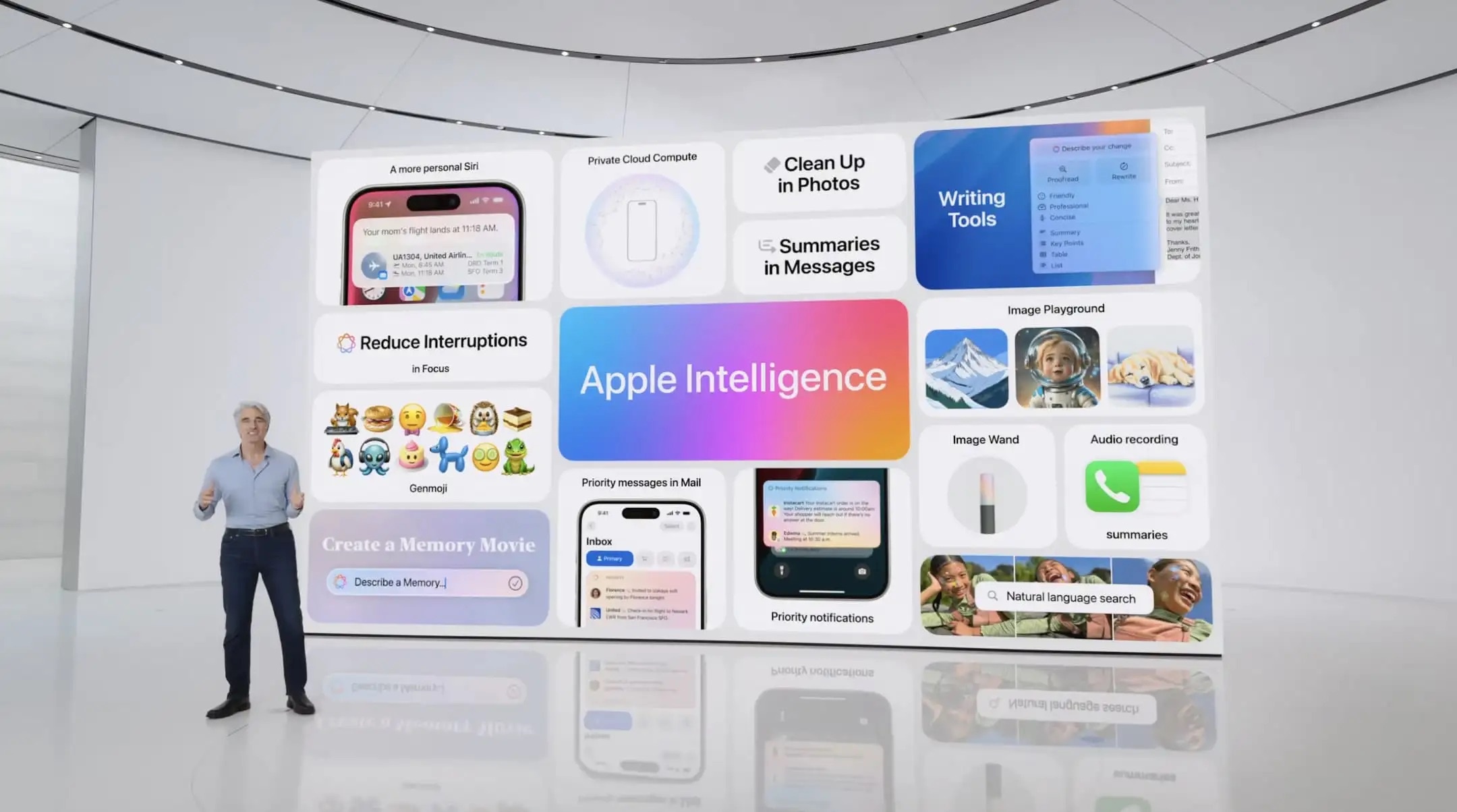 |
Apple Intelligence was launched late and has not made a big difference with competitors. Photo: Apple . |
At the June Worldwide Developers Conference (WWDC), Apple made little mention of Siri and AI, instead introducing changes to the design of the operating system. Major AI updates included extensions for third-party developers and translation features.
The next hit after the iPhone?
When it was reported that Apple would be abandoning its car project in February 2024, investors breathed a sigh of relief that the company would no longer burn billions of dollars on a risky project. But the abandonment of the car project also leaves a big void. Although difficult to manufacture, Apple could sell the car for as much as $100,000 . While the profit margin may be low, the product could still create a sales boost.
The abandonment of the project has raised concerns that Apple is being too cautious. In addition to cars, Apple has also stopped development on several projects related to improving the Apple Watch and postponed plans to launch AR glasses that connect to the Mac.
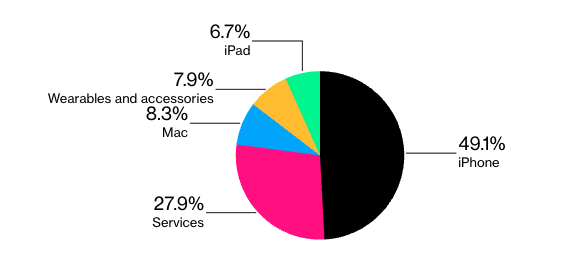 |
Apple's second-quarter fiscal year earnings show that the iPhone remains its flagship product, accounting for half of its revenue, followed by services. Photo: Bloomberg . |
The risk is that a new form of technology could emerge out of nowhere and leave Apple behind. Former design chief Jony Ive is working with OpenAI to develop next-generation hardware that could threaten the iPhone he helped create.
Virtual reality glasses fail to meet expectations
Apple has entered a new market with the Vision Pro, a high-end AR/VR device with an unclear use case. Despite its technical merits, the product has failed to gain traction with consumers and has been in limited production since late 2024.
The glasses are quite heavy, the removable battery is large, and there is glare when watching movies in dark environments. The Vision Pro is more of a prototype than a finished product, but it is expensive compared to similar devices.
 |
Vision Pro has not reached many users due to its high price and unclear purpose. Photo: Reuters . |
Initially, CEO Tim Cook wanted to create lightweight AR glasses that could be worn all day, but the technology wasn't ready, so Apple had to launch glasses that combined AR and VR.
The next challenge is to make the device lighter and cheaper for mainstream consumers. Some sources say Apple is working on a stripped-down version, a version that connects to computers for businesses, and a higher-performance upgrade model.
Risk of losing deal with Google
While the bulk of Apple’s revenue comes from hardware, services are increasingly important. One of those fees is the fee Apple gets from using Google as its default search engine, which brings in about $20 billion a year.
However, an antitrust lawsuit against Google is threatening the deal, which the US government says is a monopoly. If the deal is terminated, Apple will lose tens of billions of dollars a year.
The App Store model and its relationship with developers
Last April, a California judge forced Apple to allow developers to redirect users outside of their apps to make payments, potentially costing Apple the fees it collects from developers when users sign up for subscriptions or make in-app purchases.
The new policy will initially apply in the US, but will likely spread at the request of global regulators.
Multiple lawsuits in the US and Europe could impact the App Store business model. Photo: Shutterstock . |
Apple may have to reduce the fees it charges developers to compete with third-party payment platforms, which could hurt App Store revenue. At the same time, the company needs to improve its relationship with the developer community, which is frustrated by Apple’s closed ecosystem.
Global Legal Risk
In March 2024, the US Department of Justice and 16 states sued Apple, claiming that its policies made it difficult for competitors and consumers to switch devices. The five areas named included: super apps, cloud gaming, messaging, smartwatches, and digital wallets. The company denied the allegations and pledged to fight the case, but the case is expected to last for years.
In Europe, the Digital Markets Act (DMA), which came into effect last year, also had a big impact. It forced Apple to allow apps to be installed from outside the App Store, use alternative payment methods, and make it easier to change the default browser.
Apple has long resisted these changes, arguing that they harm the experience and security. The biggest risk is that Apple's multibillion-dollar profit model will be disrupted.
Taxes and the supply chain
Apple manufactures primarily in China, making it vulnerable to Trump’s tariffs. In April, the US government announced tariffs of up to 145%. Although they were later eased, Apple has accelerated its move to India.
 |
90% of iPhones are now made in China, according to Everscore ISI. Photo: Tuan Anh . |
Still, Apple may be forced to raise prices when it launches new iPhones later this year. Moreover, the plan to move to India is not pleasing to Trump, who wants Apple to manufacture in the US. However, Apple executives say this is extremely expensive.
CEO Successor
Tim Cook has been CEO since 2011, after the death of Steve Jobs. Under his leadership, Apple expanded into wearables, digital content and larger iPhones, becoming a $3 trillion company.
Cook turns 65 this year, raising the question of who will succeed him. The problem is that many of Apple’s senior executives are close in age, leaving few alternatives. Cook is expected to take on the role of executive chairman when he retires to help with the transition. The most promising candidate is John Ternus, the hardware chief, the youngest person on the executive board.
Sales decline in China
Apple has been on a downward spiral in China for the past few years, and the problem shows no signs of going away. Apple's revenue in China fell more than 2% in the second fiscal quarter of this year, worse than Wall Street had expected.
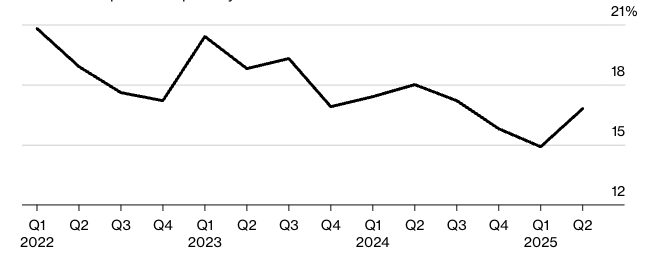 |
Contribution of the Chinese market to Apple's revenue (in %). Photo: Bloomberg . |
Homegrown Chinese brands like Vivo have gained market share, and the Chinese government has imposed a ban on foreign technology in some workplaces. As geopolitical tensions between the US and China rise, Apple’s dependence on China as both a market and a manufacturing hub is becoming more risky.
Smartphone market saturation
The iPhone 16 series, which will be launched in September 2024, is being heavily promoted by Apple with AI features, hoping to encourage users to upgrade. However, the company's smartphone revenue still fell 1% in the final months of 2024.
In February, Apple launched a new low-cost iPhone, the iPhone 16e, replacing the $429 iPhone SE with a more modern model. But the device costs $599 , which is much higher than many competitors in the same segment.
The bigger problem is that consumers still don't see a compelling reason to upgrade their phones, especially given that prices for new devices are likely to continue to rise.
Source: https://znews.vn/10-noi-dau-cua-apple-post1565762.html










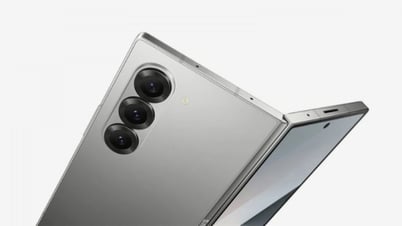



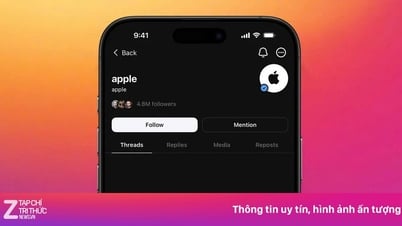


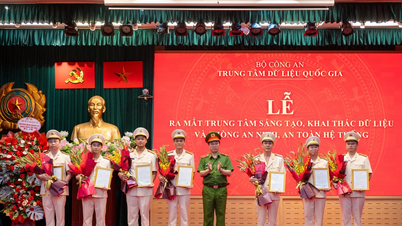











































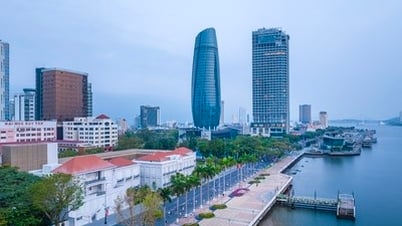

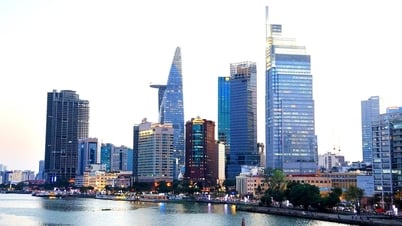




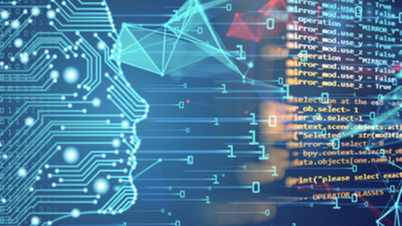


















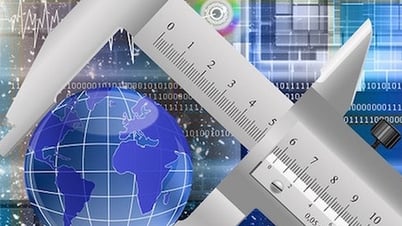
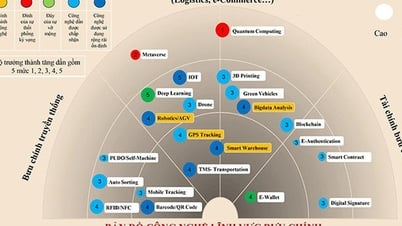







Comment (0)